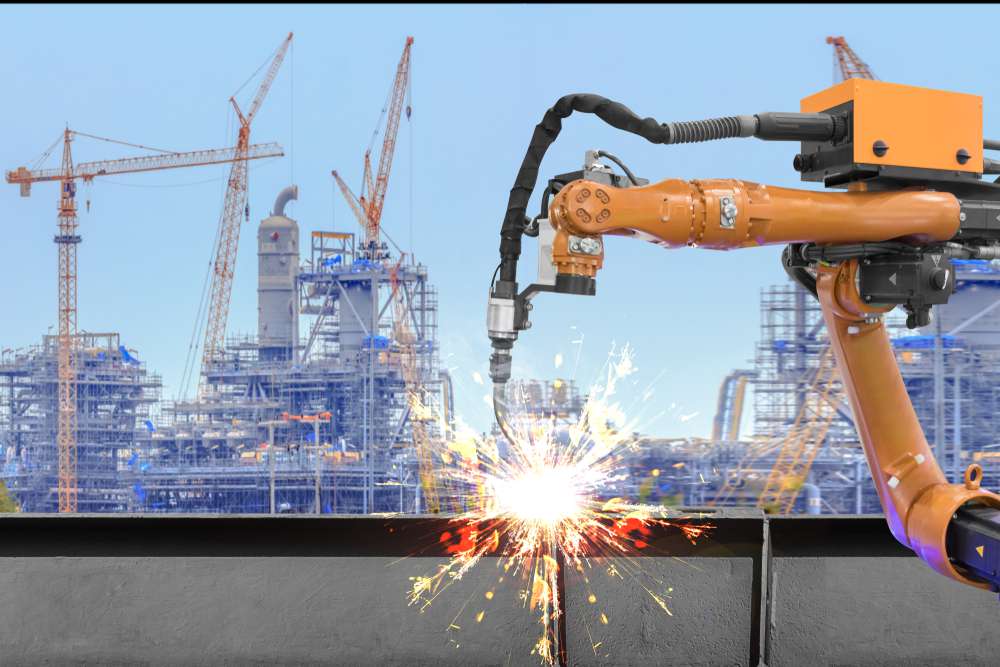
INTRODUCTION
The scope of automation in construction is broad, encompassing all the stages of construction life from initial planning and design, through construction of the facility, its operation and maintenance, to the eventual dismantling and recycling of buildings and engineering structures. The recent developments in the fields of computer science and robotics have helped to develop new technologies in the field of construction industry. In Japan which is a leader in robotics and automation have developed many new technologies and machinery which have helped the construction industry to reduce human efforts, construction cost and project time period and increase the productivity.
At times construction work is conducted under dangerous condition and situation, thus there is need for robotics to optimize equipment operation improve safety and quality of work. Automated construction process leads to a continuous working time through the year. For rapid construction with less risk and good quality there should be more and more use of machines as well as equipment in the construction industry. Human efforts and risks are reduced by using machines, robots, etc. at appropriate places. Since India has second largest man – power in the world, automation is not replacements of the human-power but is an important supplement that caters to the need of mega-construction and fast-track construction. Nowadays, in India, the human power is replaced by new technologies of automation because of unskilled labors, as they do not give good quality work as compared to automation. Automation increases the productivity of the construction project, reduces the duration and laborious work, and increases the construction safety, increases the quality of work as compared to unskilled workers.
The main research activities of the automation in construction industry are divided accordingly to applications into two large groups: civil infrastructure and house building. Typical civil infrastructure robot applications are the automation of road, tunnel and bridge construction, earthwork, etc. In the group of house construction, main applications include building skeleton erection and assembly, concrete compaction, interior finishing, etc.
Advantages of automation in construction
Automation in construction industry may achieve the following advantages:
•Uniform quality with higher accuracy than that provided by skilled workers.
•Replacing human operators in tasks that involve hard physical or monotonous work.
•Replacing humans in tasks performed in dangerous environments such as those with heights, over a river etc.
•Making tasks that are beyond human capabilities easier.
•Increasing productivity and work efficiency with reduced costs.
•Economic improvement. Automation can serve as the catalyst for improvement in the economies of enterprises or society. For example, the gross national income and standard of living in Germany and Japan improved drastically in the 20th century, due in large part to embracing automation in construction and infrastructural development.
•Improving work environment as conventional manual work is reduced to a minimum, so the workers are relieved from uncomfortable work positions.
Areas of automation in Construction
•Roads & Runways construction
•Structures
•Buildings construction
•Ports
•Tunnels
•Factories and industries
SUGGESTED AUTOMATION CONCEPTS
Use of Putzmeister Tele belt
A tele belt also called as telescopic belt machine handles 0 to 300mm concrete slump and places materials from sand to rock with 100mm aggregate size. Tele belt is the best solution for large construction sites where long reach and high volume placing is required such as dams, foundation and footings, bridge decks, tilt and outdoor slabs, mats pours etc.
A tele belt comprises of five section telescopic boom – base steel section and four telescopic high strength yet lightweight aluminium sections. Telescoping boom reduces problems with obstacles and saves labour and time.

Fig 1: A Tele belt machine

Fig 2: An Operator with a telebelt remote
The use of telebelt has the following advantages:
•Versatile placement:Easily and quickly clears obstacles, Ideal for mat pours, backfilling, tilt-up projects, bridge decks, and slab work.
•Saves time and labor: Performs multiple tasks from one location, Quick setup and teardown, Places material at high volumes with less manpower and handling machinery.
Thus in the construction industry there are many machines which can be used to so as to reduce the human effort, the overall labor cost and increase the productivity of the work. In India where there is a scope of infrastructural development use of automation in construction should be increased.
Overall, the advantages of use of automation in construction industry seem to outweigh the disadvantages. It can be safely said that countries that have embraced automation enjoy a higher standard of living than those that have not. At the same time, a concern is often aired that automating tasks takes jobs from people that used to build things by hand. Regardless of the social implications, there is no doubt that productivity increases with the proper application of automation techniques. The importance of implementing automation technologies is the need of today’s infrastructure project and construction firms in order to increase the productivity and good quality of work. Both small and medium size firms require automation technologies partly or fully to implement in different sectors such as design, planning, on site construction etc.



Comments are closed